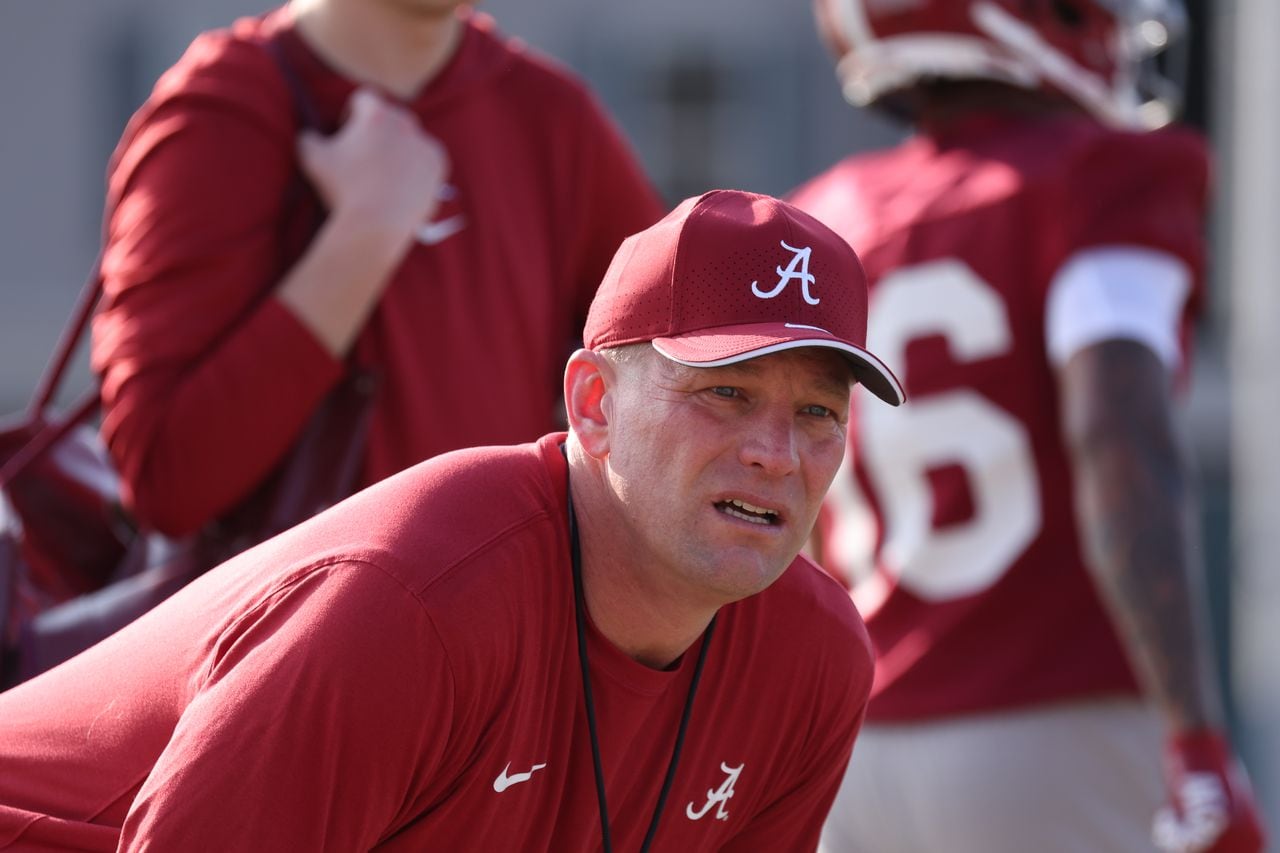Alabama practicing with helmet communicators in 1st spring practice
It was a new era in Tuscaloosa for Alabama on Monday, and no, we’re not just talking about the head coach. At times, in what Kalen DeBoer called a “smooth” first practice, a couple of Crimson Tide players had to hold their hands over their helmets to receive the play call — a sign of the times in a sport rapidly modernizing.
On March 1, the NCAA rules committee paved the way for “coach-to-player” communicators ahead of the 2024 season. It was an anticipated and likely overdue move that mirrors how NFL teams relay signals to their teams. One player, most often a linebacker or quarterback, will wear the “green dot,” demarking his helmet with a one-way receiver. In his first time leading the UA program in workouts, DeBoer made sure UA would be ready for the adjustment.
“We had it out there. With supply and demand across the country, we aren’t able to have as many as what the max would be, but we had a couple quarterbacks with that in,” DeBoer said. “I haven’t heard any feedback yet. I think early on there were a couple of times it was hard to hear, one way or another. I don’t think it was too soft. I think it was actually because it was too loud. But I’m sure that will get tested in our stadium at some point.”
While an NCAA panel won’t officialize the helmet communicators till April 18, teams in non-College Football Playoff bowl games last year got to try them out to nearly universal praise. Paranoia flooded coaching offices and message boards in the fall following Michigan’s sign-stealing scandal.
Staffers typically deployed cards and had multiple assistants use hand signals to key which play was coming. Nearly all Southeastern Conference coaches agreed that communicators were necessary and league commissioner Greg Sankey hinted at the Michigan debacle “accelerating” their implementation.
“I think there’s a lot of reasons for it, you know, that I know it can be positive. I don’t know that it answers all the concerns you might have when it comes to some of the things that people will say it automatically fixes, maybe sign-stealing and things like that. Because I think there are other ways it could go the other way, just with being intentional and trying to get a call and being able to echo it through your defensive headset. I could go on and on with that. But it was good. I think the quarterbacks were just getting used to it, I saw them a couple of times putting their hand up to their helmet and listening, but for the most part, it seemed clean,” DeBoer said.
For Day 1 of DeBoer’s tenure, multiple UA quarterbacks heard play calls from Nick Sheridan. DeBoer confirmed that returning starter Jalen Milroe worked with the first team but stressed competition at every position. The extra seconds to get a play in could be crucial for a motion-heavy, timing-based DeBoer offense that nearly won a national championship.
Nick Alvarez is a reporter for Alabama Media Group. Follow him on Twitter @nick_a_alvarez or email him at [email protected].
